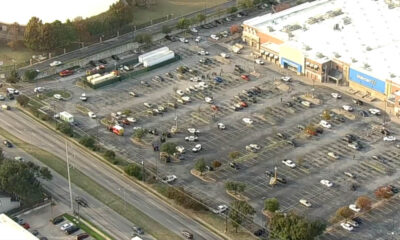Reviews
Overcoming Challenges: How Robotics are Addressing Common Issues in Cable Laying Projects

In the field of cable installation, efficiency, precision, and safety are paramount. Traditional methods often encounter numerous obstacles that hinder progress and elevate costs. With the advent of robotics, the landscape of cable laying projects is undergoing a significant transformation. These advanced machines are not just aiding but revolutionizing the process, addressing common issues with remarkable efficacy.
This post will look into how laying cables with robot helps overcome the challenges faced in cable installation projects. It will explore their role in navigating difficult terrains, managing complex site layouts, and meeting stringent time constraints. By the end, you’ll clearly understand how these technological marvels are reshaping the industry and paving the way for more efficient cable laying operations.
Navigating Difficult Terrain
One of the most significant hurdles in cable laying projects is dealing with challenging terrain. Traditional methods require substantial manual labor and often involve high risks. Laying cables with robot, however, offers a safer and more efficient solution. Equipped with advanced sensors and mobility systems, robots can traverse rough, uneven, and hazardous terrains with ease. They can operate in environments that would be perilous for human workers, significantly reducing the risk of accidents.
Robots can also adapt to varying ground conditions. These machines are designed to maintain stability and precision, whether it’s rocky surfaces, muddy grounds, or steep inclines. This capability enhances safety and speeds up the installation process, as robots can work continuously without the need for frequent breaks or risk assessments that human workers require.
Managing Complex Site Layouts
Cable installation projects often involve intricate site layouts that can be challenging to navigate. Traditional methods rely heavily on human judgment, which can sometimes lead to errors and inefficiencies. Robotics, on the other hand, brings an unmatched level of precision and accuracy. Advanced mapping and navigation technologies enable robots to create detailed site plans and follow them meticulously.
These machines can also communicate and coordinate with each other, ensuring seamless operation across the site. This coordination reduces the chances of errors and overlaps, leading to more efficient use of resources. Robots can easily access tight or hard-to-reach areas, laying cables in spaces that would be difficult or impossible for human workers to reach. This precision and adaptability make robotics an invaluable asset in managing complex cable installation projects.
Meeting Time Constraints
Time is a critical factor in any cable installation project. Delays can lead to increased costs and missed deadlines, affecting overall project success. Robotics offers a solution that significantly accelerates the installation process. Robots can work around the clock, unaffected by fatigue or adverse weather conditions. This 24/7 operational capability ensures that projects stay on schedule and meet tight deadlines.
Furthermore, the precision and efficiency of robots reduce the need for rework, which is a common cause of delays in traditional methods. By getting the job done right the first time, robots help to streamline the entire process. Additionally, robots equipped with real-time monitoring and diagnostic tools can quickly identify and address any issues that arise, minimizing downtime and keeping the project on track.
Enhancing Safety and Reducing Costs
Safety is always a top priority in cable laying projects, and robotics is crucial in enhancing it. Robots protect human workers from potential hazards by taking on the most dangerous tasks. This risk reduction safeguards the workforce and decreases the likelihood of costly accidents and injuries.
Moreover, while the initial investment in robotic technology can be significant, the long-term cost savings are substantial. Robots reduce the need for extensive labor and can complete projects faster, lowering overall expenses. Their efficiency and reliability also mean fewer mistakes and less material waste, contributing to more cost-effective operations.
The Future of Cable Laying with Robotics
The integration of robotics in cable laying projects is just the beginning. As technology continues to advance, people can expect even more sophisticated and capable robots to enter the field. Innovations such as artificial intelligence and machine learning will further enhance their capabilities, enabling them to tackle even more complex tasks with greater autonomy.
Future robots may be able to conduct real-time data analysis and make decisions on the spot, further streamlining operations and improving efficiency. The continued development of these technologies will undoubtedly lead to safer, faster, and more cost-effective cable laying projects, setting new standards in the industry.
Robotics is transforming the cable laying industry by addressing common challenges with innovative solutions. From navigating rugged terrains to managing complex site layouts and meeting tight deadlines, robots are proving to be indispensable allies. Their ability to enhance safety, reduce costs, and increase efficiency marks a significant step forward in the evolution of cable installation methods. As technology progresses, the role of robotics in cable laying will only become more prominent. Embracing these advancements will not only improve project outcomes but also pave the way for a future where cable installation is safer, faster, and more efficient than ever before.

-

 Legal6 days ago
Legal6 days agoMichigan man JD Vance sentenced to 2 years for threatening Trump and JD Vance
-

 Politics1 week ago
Politics1 week agoU.S. to designate Maduro-linked Cartel de los Soles as terrorist organization
-

 Health7 days ago
Health7 days agoCambodia reports fatal H5N1 bird flu case in 22-year-old man
-

 World4 days ago
World4 days agoHurricane Melissa registered 252 mph wind gust, breaking global record
-

 Legal4 days ago
Legal4 days agoWoman in critical condition after being set on fire on Chicago train
-

 Politics7 days ago
Politics7 days agoEpstein survivors release PSA calling on Congress to release all files
-

 Legal4 days ago
Legal4 days ago1 dead, 2 injured in shooting at Dallas Walmart parking lot
-

 Legal3 days ago
Legal3 days agoSuspect in San Diego stabbing shot by authorities after fleeing into Mexico




